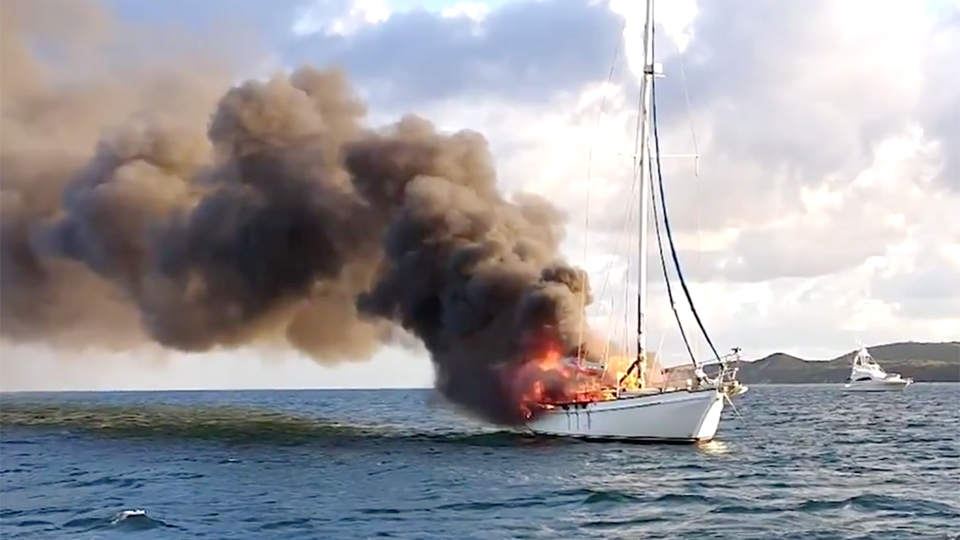For years while on long distance passage, others on the crew and I discussed a wide range of “what if scenarios” while sitting on the rail. Some had a basis in our respective pasts. Others were merely hypothetical. All provided us with some insights and options if and when we were ever faced with similar problems. Confronting smoke at the crack of dawn is merely one of many situations we’ve considered, faced and overcome.
Initially, one has to stop the problem from getting worse. Immediately wake everyone up to marshal everyone’s efforts. Quickly assess the situation. If the likely source for the smoke might be due to an electrical short, shut down most of the electrical panel, keeping communications open. If the severity of the smoke is relatively light, determine whether there is open flame or if cutting the electricity has stopped the smoke. If flames are present or the density of the smoke is increasing, notify the Coast Guard of your problem and attempt to put out the flames while one or two on the crew are dedicated to preparing to abandon ship. You can always call the Coast Guard back and inform them that you have gotten the situation under control, if you’re able to do that.
On board fires can spread quickly, however, so if it appears that you have a fire that may get out of control, notify the Coast Guard. In one case, we were able to immediately reduce the smoke and determined that water had leaked from the chain plates and short circuited a rather flimsy power strip designed for home use. We were immediately ready with fire extinguishers, understood that if flames were present we would need to fight those flames at their base, and if fiberglass was molten or ignited, putting out the flames would not stop the fire from restarting. Once the fire associated with molten fiberglass is extinguished, the molten fiberglass can re-combust spontaneously. The molten fiberglass needs to also be cooled, probably using water to avoid the fire restarting.
Engine room fires can be somewhat different. With ample fuel, you may need to seal off the engine room and, if available, use a fire extinguisher that eliminates oxygen from the engine room. While highly effective at stopping engine room fires, all crew must be well away from the sealed off engine room and preferably on deck or they will suffocate.
Knowing the uses, techniques, locations and limitations of all of your firefighting equipment is of paramount importance in an onboard fire. Fumes can be highly toxic and limit your ability to see adequately and fight the fire effectively. Considering that fiberglass is a flammable hydrocarbon byproduct, a fire can spread very quickly. Knowledge, training and well-understood and up to date equipment are your best defenses when fighting fires. If the situation gets out of hand, a well-stocked grab bag and proper life raft can keep a terrible situation from becoming a true tragedy. What would you do? Email us at: george@bwsailing.com















